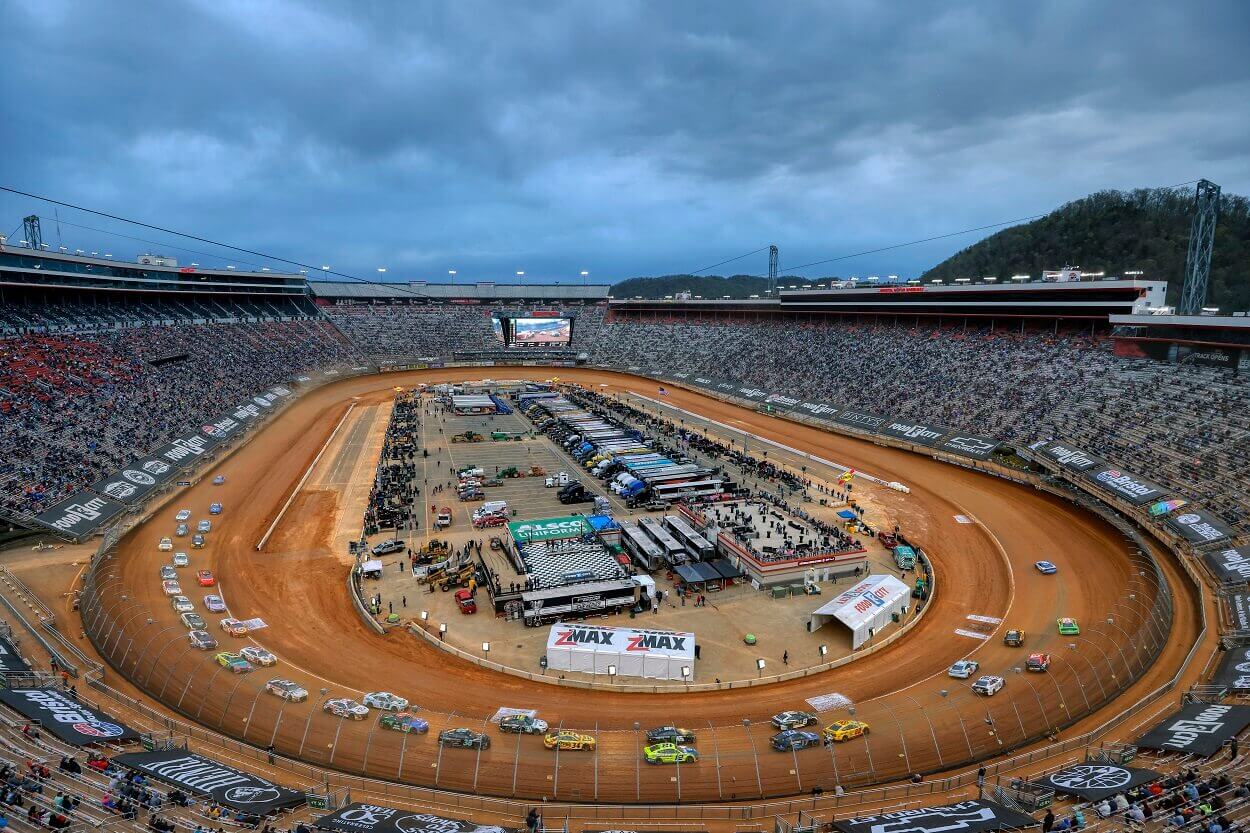NASCAR
The Clash vs. COTA vs. Bristol Dirt: Which NASCAR Race Has the Most Staying Power?

Three of the biggest additions NASCAR has made to the Cup Series schedule across the last three years have largely been successful endeavors, with the third edition of the Bristol Motor Speedway dirt race set for Sunday, but can all three continue to live on the schedule annually?
NASCAR had long had a stagnant schedule for various reasons. The Cup Series ran at the same set of tracks in roughly the same order for the better part of two decades, but that structure changed significantly after multi-year sanctioning agreements between NASCAR and the tracks expired and the COVID-19 pandemic forced the sanctioning body to be flexible about moving race dates.
NASCAR has made numerous changes to its schedule in recent seasons
Those factors helped bring about the Clash at the Los Angeles Memorial Coliseum preseason exhibition race, a new road-course race at the Circuit of the Americas in Austin, Texas, and the previously mentioned dirt venture at Bristol.
COTA has already had three NASCAR weekends, while the LA Clash and Bristol dirt race have had two opportunities to put on a show. Some of the wildest moments in the sport have happened in these events the past three seasons, but several factors will ultimately decide whether or not that is enough to keep them on the NASCAR schedule for years to come.
The Clash is the latest of the trio to join the Cup Series slate. NASCAR executives made a bold decision to try to fit a quarter-mile short track into a football stadium, and it worked. The events in both 2022 and 2023 went off relatively flawlessly, although the most recent edition featured a mind-numbing 16 caution flags that slowed down the main event considerably.
The COTA NASCAR race survived its biggest issues in its inaugural event in 2021. Rain plagued the track throughout the weekend and the entirety of the Cup Series event. NASCAR tried to race through the rain, but the sustained intensity through the afternoon led to unsafe conditions and contributed to several vicious crashes. Officials eventually called the race 14 laps early with Chase Elliott out front.
The next two events at the Texas road course were much more typical NASCAR weekends, and they both provided late-race drama, although this year’s event got a little out of hand with multiple overtime restarts. Still, attendance and energy have been good at all three COTA races.
The Bristol dirt race is perhaps the most controversial of these changes since NASCAR took away the traditional spring date at the high-banked, half-mile concrete track to cover it in dirt instead.
The racing has been competitive both years despite hiccups along the way as the industry learned how to run Cup Series stock cars on a dirt track for the first time in more than 50 years. Joey Logano won the first event in 2021, and Kyle Busch snuck by Tyler Reddick and Chase Briscoe when they collided on the final lap of last year’s race for Busch’s only win of the season.
Attendance and television ratings have been good for the Bristol dirt race, so decision-makers have reasons to keep the race on the schedule, much like the Clash, but it also costs a significant amount of money to both build a temporary race track inside a football stadium and build a dirt track on top of an existing racing surface.
Clash and dirt race could move and still be successful, while COTA is unique to itself

Plus, the Clash and dirt race run the risk of becoming stale since options exist to rotate those events to other facilities. Many fans would like to see the novelty of the Clash in stadiums other than just the LA Coliseum, and numerous famous dirt tracks throughout the country would be atop many fans’ lists to host a Cup Series race.
COTA, meanwhile, benefits from its location in multiple ways. It is a popular road course in a growing area of the country, and NASCAR likely would prefer to keep a footprint in Texas while it figures out what to do with the 1.5-mile oval Texas Motor Speedway three hours north in Fort Worth, Texas.
NASCAR has already dropped TMS to one race on the schedule for this year and might have to make drastic changes to the venue as attendance and quality of the racing has dragged since a reconfiguration in 2017.
All three of the new events have the potential to remain stalwarts on the NASCAR schedule for the foreseeable future. COTA, however, probably has the best chance to be a long-term home for a NASCAR date because it is less of a gimmick and more of a regular race in a market that is important to the industry, while NASCAR could find another home for the Clash and possibly delight as many fans as it disappoints if it moves the dirt race away from Bristol.











